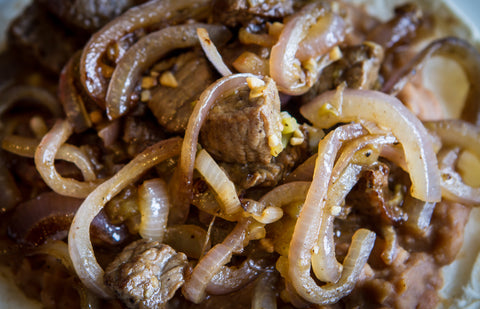
The history of "fajita" is as rich as the taste it provides.
And when you think of the word Tex-Mex that is fajita in a nutshell.
While the word itself comes from the Spanish word ‘faja’, it’s the Mexican cowboys (vaqueros) who were the inventor’s of this dish, although it would be known as arracheras and was just one of the throw away portions of beef they’d be paid in which included tripe, head, entrails and the other tossed by products of butchering.

The mystic and popularity of fajita’s is another matter entirely and there has been studies done to try and prove the history of the fajita, including one study down by members of Texas A & M to find the sole inventor or first restaurant.
But regardless of who or when, we’re happy the where and why happened. Texas is great eating and has always been that way.
Let’s get to the recipe.
1 cup Claude's Fajita Marinade1 cup generic Italian Salad Dressing
2 lbs. Skirt steak
1 large tomato cut in small wedges
1 medium onion cut in small wedges
1 stick butter
In a large bowl, blend Claude’s Fajita Marinade and Italian salad dressing together. Mix in skirt steak, tomatoes, and onions, mixing well to coat meat with sauce.
Cover and marinade the meat in refrigerator for 2 to 5 hours.
Remove meat, tomatoes and onions from sauce.

Melt butter in large frying pan over a low fire and then add meat mixture and fry over high heat mixing constantly. Pour out any moisture from the meat and continue to fry until meat is lightly browned. Serve meat on hot flour tortillas with avocados, sour cream and chili sauce.
Now prepare to serve. This dish will feed a family of four.




